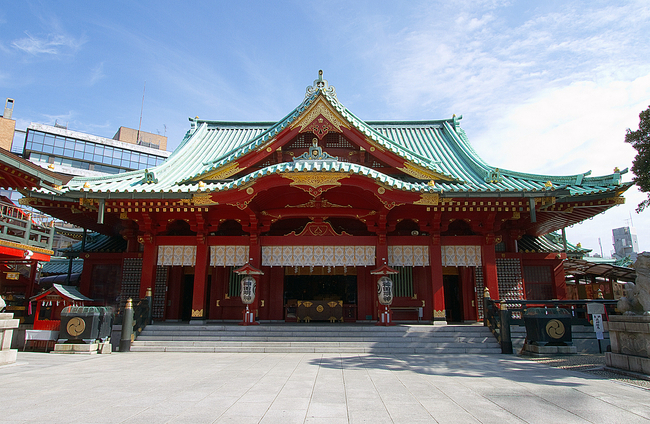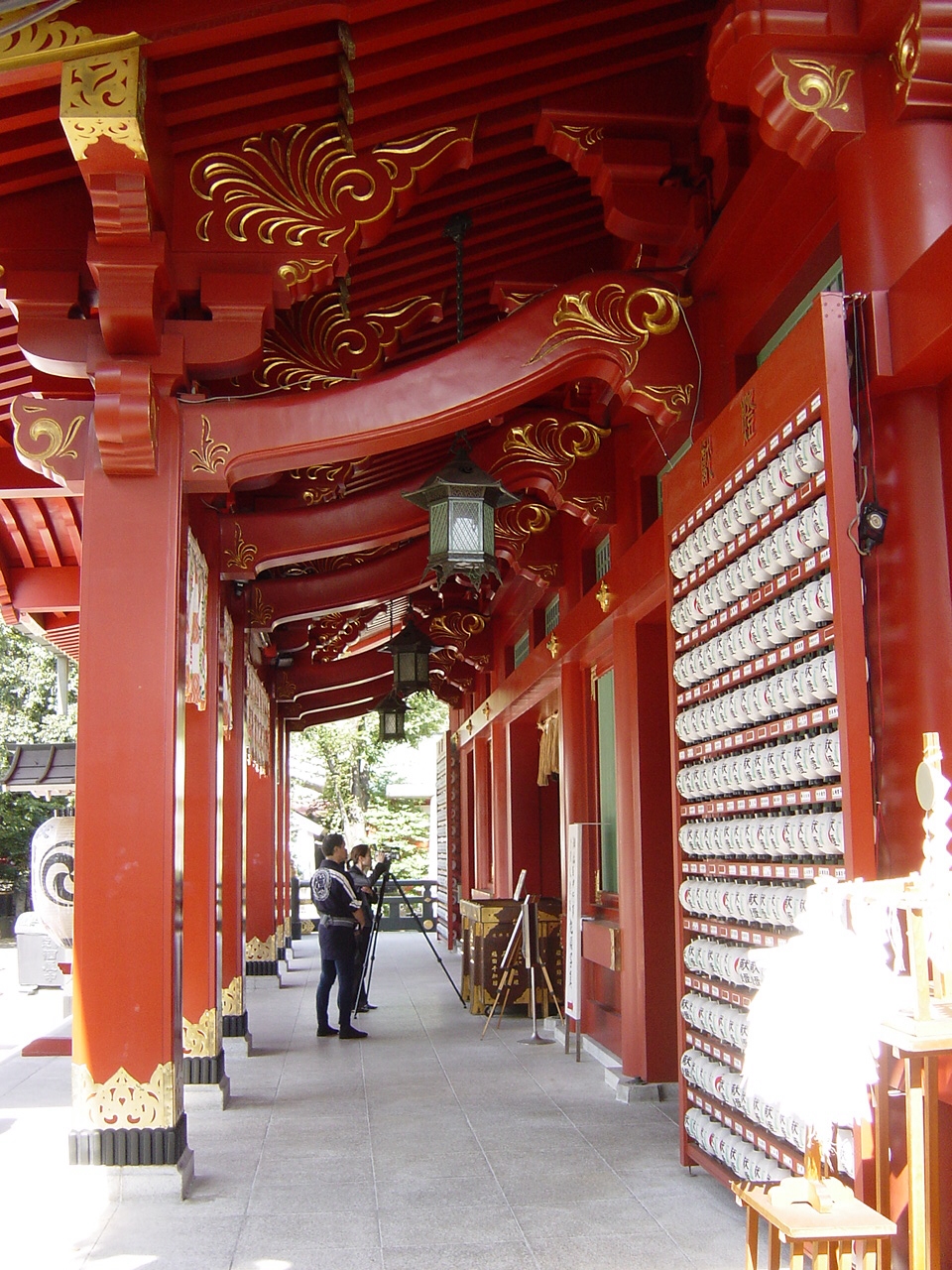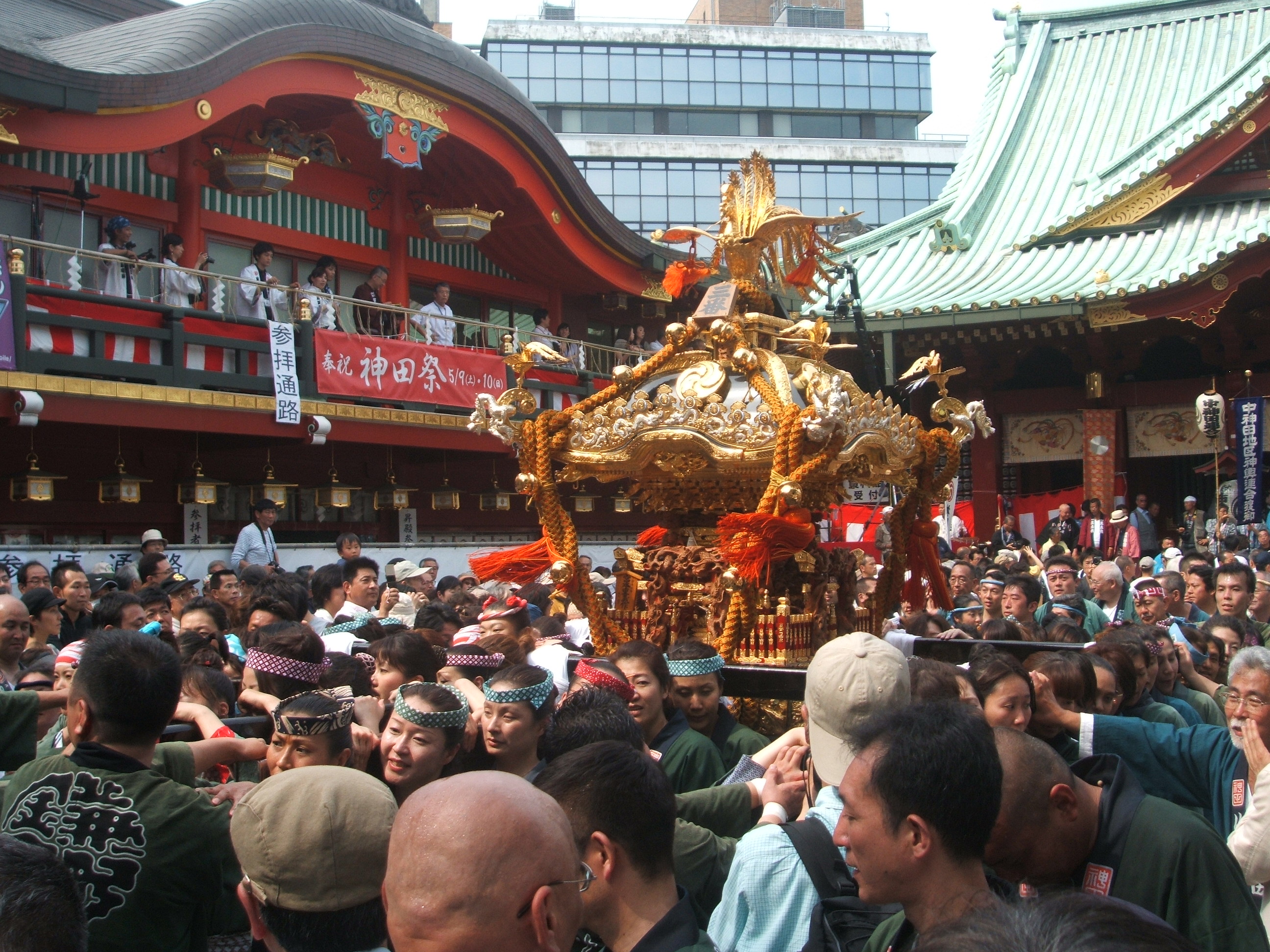
Kanda Myojin has a long history, and it is said that the Izumo clan settled in the Kanto area before the Nara era, built shrines that enshrined Onamuchi no mikoto, which is transmitted to their ancestors.
In the Edo period, the shogunate was opened in Edo, and Kanda Myojin was relocated to its current location. The Kanda festival began after the Edo period. Because the general was also watching the festival floats, it was called “Tenkamatsuri” (The Whole Country Festival).
In the Meiji period, Kanda Myojin changed its official name to Kanda Shrine. Kanda Shrine has since become a tutelary deity in 108 towns that represent Tokyo, and worshipers never stop.
The Kanda Festival is an annual festival of Kanda Myojin and is one of the three largest festivals in Japan along with the Gion Festival in Kyoto and the Tenjin Festival in Osaka. The main festival is held once every two years.
At the festival, “mikoshi” (portable shrine) of each town that acts as “Ujiko” (Shrine Parishner) walks through the town. There are many highlights such as “period procession” and “festival music procession” of people wearing Heian period costumes and armor. Many tourists come from both inside and outside the country.
The existing temple was erected in 1934. The shrine built in the Edo period was damaged by the Great Kanto Earthquake in 1923, and was rebuilt using the architectural techniques of the time.
The shrine is a Gongen-zukuri style building with a unique structure built to overlap the main hall, hall of offerings, worship hall, shrine, and treasure house. Currently registered as a national tangible cultural property.
Several auxiliary shrines and subsidiary shrines are erected in the precincts of Kanda Myojin. Among them, “Edo Shrine” is the oldest deity associated with the local area in the Kanto region, which was said to have been built near the current Imperial Palace before the Nara period. With the passage of time, Kanda Myojin began to gather the faith of warlords who ruled over Kanto.
Kanda Myojin is a shrine in the center of Tokyo. There are Japan Railway and Tokyo Metro stations in the vicinity, and there is also a Toei bus station. Therefore, it is recommended that you use public transportation when visiting Kanda Myojin. A 5-minute walk from Suehirocho Station on the Tokyo Metro Ginza Line.
Let’s visit the shrine while thinking about the history of 1,300 years
“Kanda Myojin” (Kanda shrine) in Sotokanda, Chiyoda Ward, Tokyo is the Edo Sochinju (the center place to pray for local gods) located in kimon-yoke (to protect people from evil) of Edo Castle. It is an indispensable shrine that has Otemachi and Marunouchi, the center of the Japanese economy, as an area of parishioners, praying for business luck in the city center and prosperous business. The official name of “Kanda Myojin” is called “Kanda Jinja (Shrine)”. It is known as a shrine that has been taking the famous “Kanda Festival” as one of the three biggest festivals in Japan and one of the Edo three major festivals, and has long been loved and respected by the people of Edo for a long time. More than 300,000 visitors come every year during the New Year’s visit to the city, attracting attention as one of the most sacred places in Tokyo. The precincts are located in downtown area and have good transportation and many visitors come as shrines that can visit casually.
In “Kanda Myojin” which has a history of 1,300 years since it was settled in Tokyo, there is a powerful Setsumatsu sha (smaller shrines managed under the shrine) so as to surround the back of the Shrine buildings. Let’s visit the shrine while thinking about the history of 1,300 years.
Kanda Myojin is said to be one of the oldest Shinto shrines in Tokyo, and its history is approximately 1,300 years since Nara era. It has been ardently worshiped as “The Guardian of Edo” by common people in Edo era not to mention the Shogunate. Even now, It is the “Ujigami” (the local Shinto deity) of 108 town councils of the Tokyo downtown area including Nihonbashi and Marunouchi.

The enshrined deity of Kanda Myojin is Daikoku (God of marriage), Ebisu (God of business prosperity), and Taira no Masakado (God of the disaster prevention and warding off evil).

It is also known as the venue of “The Kanda Festival” that is one of three great festivals of Edo. The festival is held in the middle of May once in two years. It has the museum displaying picture scroll books in its establishment.

From antiquity down to the present, Kanda Myojin that is popular among ordinary people as the Guardian of Edo, keeps splendid traditional culture of there, and continue protecting it.

The main shrine of Kanda Myojin have disappeared once by the Great Kanto Earthquake. The main shrine of the total vermilion lacquer coat was completed again in 1934. The main shrine, which has survived the Tokyo air raids in 1945, revived in a beautiful figure of the Edo era by great restoration carried out from the Showa era through the Heisei era, It registered with the tangible cultural properties of the country in September, 2003.
Information(Access, Price/Charge, Tel, Address, Official site, etc.)
| Name: | Kanda Myojin (Kanda shrine) |
| Adresse: | 2-16-2 Sotokanda, Chiyoda, Tokyo 101-0021 Japan |
| Access: | Tokyo Metro Ginza-sen line "Suehirocho-eki Station” (5 minutes walk) |
| Tel: | (+81) 3-3254-0753 |
| Price/Charge: | Free *It is charged for prayer. Please refer the official web page. |
| Official site: | http://www.kandamyoujin.or.jp/ |
Leave a Reply